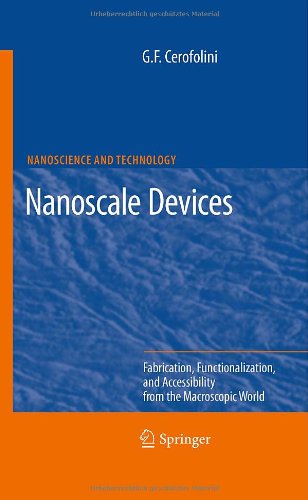Gianfranco Cerofolini (auth.)354092731X, 9783540927310
The evolution of the microelectronics is controlled by the idea of scaling. However, the scaling of the device size below 10 nm is expected to be impossible because of physical, technological and economic reasons. Fundamental considerations (based on Heisenberg’s principle, Schrödinger equation, decoherence of quantum states, and Landauer limit) suggest that a length scale of a few nanometers is possible. On this length scale, reconfigurable molecules (via redox or internal excitation processes) seem to be suitable for that. Moreover, crossbar with cross-point density in the range 1010–1011 cm-² can already be prepared with existing methods, and such methods permit the link of nanoscopic cross-points to lithographically accessible contacts. The structures for molecular electronics deal with molecules. Although this subject is highly interdisciplinary (covering quantum and statistical mechanics, supramolecular chemistry, chemistry of surfaces, and silicon technology and devices), the book is intended to be self-contained providing in appendices the necessary side knowledge.
Table of contents :
Front Matter….Pages 1-14
Front Matter….Pages 1-1
Matter on the Nanoscale….Pages 3-7
Top-Down Paradigm to Miniaturization….Pages 9-18
Physical Limits to Miniaturization….Pages 19-44
The Crossbar Structure….Pages 45-52
Crossbar Production….Pages 53-68
The Litho-to-Nano link….Pages 69-82
Functional Molecules….Pages 83-93
Grafting Functional Molecules….Pages 95-130
Front Matter….Pages 134-134
Examples….Pages 135-140
Self-Similar Nanostructures….Pages 141-149
Molecular Motors….Pages 151-163
Nanobiosensing….Pages 165-178
Abstract Technology….Pages 179-190
Back Matter….Pages 197-211







Reviews
There are no reviews yet.